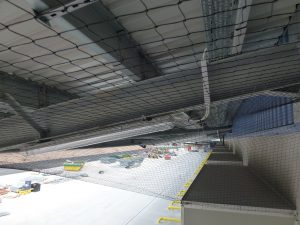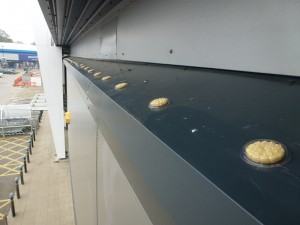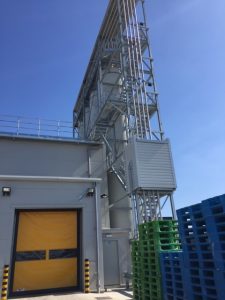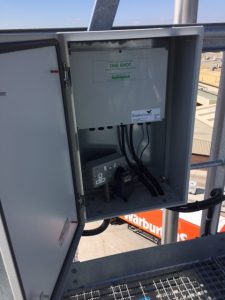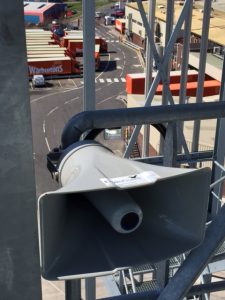Your basket
0 items - £0Birds will perch and nest anywhere that they can. For Airbnb hosts and rental property owners, this causes problems. What do you need to know about bird spikes for rental properties? Our experts dive into their uses and which is best for you.
| What are bird spikes used for Bird spikes deter birds from roosting and perching. The spikes are fixed to a narrow but flexible base, allowing for installation in areas most desirable to birds. They look aggressive but are blunt so aren’t designed to harm the birds. The narrow spacing between spices prevents them from landing, with different sizes for different species. | 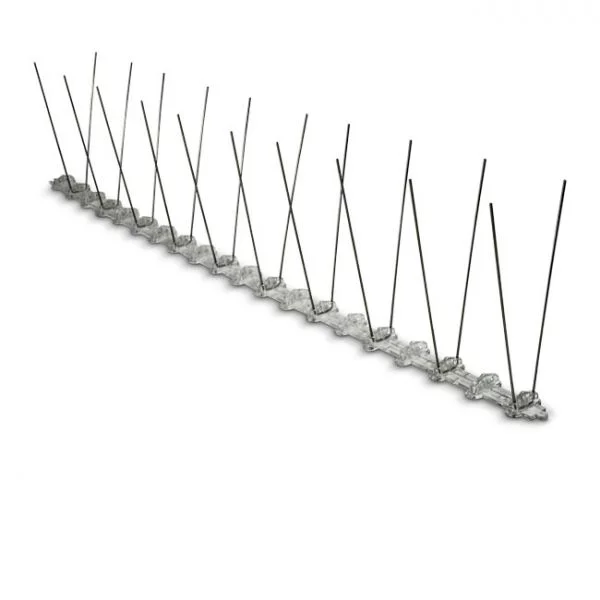 |
Why bird control is crucial for Airbnb and rental properties
Birds can cause plenty of problems, including:
- Noise disruption. Many birds will chirp in the early morning, disrupting your Airbnb guests. Some species of birds, such as seagulls, can become aggressive if they perceive the area around your property as their space.
- Hygiene risks. Bird droppings, or guano, can harbour harmful bacteria such as Salmonella or contain Histoplasma fungus. These can cause diseases like respiratory infection, pneumonia, or histoplasmosis.
- Structural damage. Guano is acidic. This can lead to structural damage in buildings and cosmetic damage in paintwork.
Why are bird spikes for Airbnb must-haves?
Airbnb hosts pride themselves on high levels of cleanliness. Nesting birds can ruin this and cause significant issues, leading to:
- Guest complaints
- Sanitation issues
- Listing violations
- Additional cleaning costs
As the UK’s leading bird control experts, we have delivered bird spikes for Airbnbs and property rentals across the country, as well as other bird control technology. Read the reviews below to discover how we could help you.
Are bird spikes the most efficient bird control for rental?
Bird spikes aren’t the only bird control method you should consider for your rental property. Netting, repellent gels, and ultrasonic devices can all be used, but bird spikes are the most efficient bird control method.
They require minimal maintenance, saving you valuable time and money, and last for a long time, ensuring your property is free from nesting birds f
Choosing the right bird spikes
There are many different species of birds, which is why we have a variety of bird spikes to suit your needs. If you have a particular problem pest to deal with, you can buy bird spikes specifically designed to deal with that species.
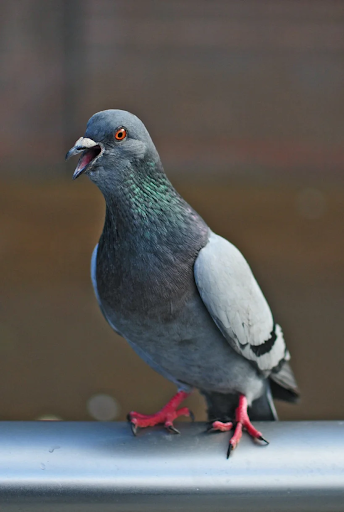 Pigeon spikes Pigeons are common in the UK and will perch anywhere, especially around city rental properties. Our pigeon spikes are medium-sized with a wider spacing, usually between 1.5 and 2 inches apart, to prevent pigeons from landing on ledges, windowsills, and rooftops. Shop pigeon spikes | 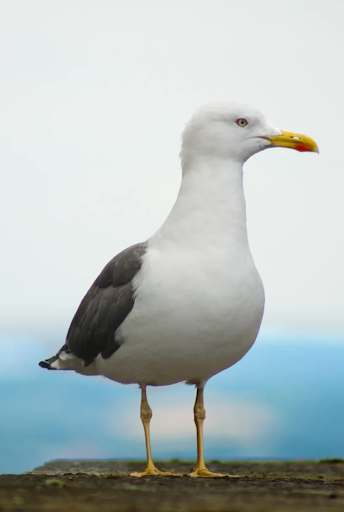 Seagull spikes Any seaside Airbnb and rental properties will have to deal with seagulls. Seagull spikes are designed to be sturdier than other types, with wider spacing for their larger wingspan and stronger grips. They are ideal to use on rooftops, signs, and chimneys. Shop seagull spikes | 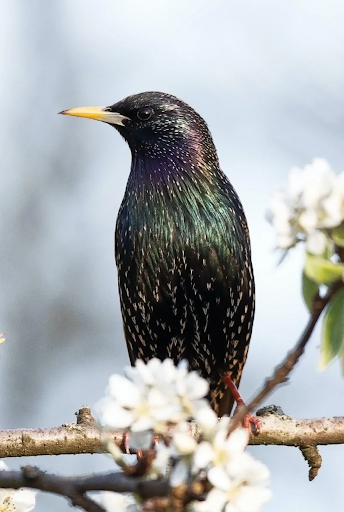 Starling spikes Rural rentals, especially barn conversions or countryside cottages, might have problems with starlings. Starling spikes are finer and closer together to deter smaller birds, which might easily perch between standard pigeon spikes. Shop starling spikes | 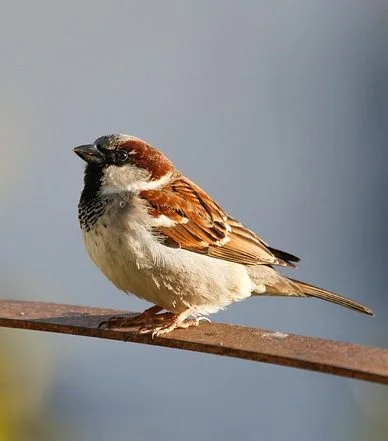 Sparrow spikes If you own a historic rental property, sparrows can easily get into roof spaces or vents to nest. Sparrow spikes are some of the narrowest, with densely packed spikes to prevent sparrows from roosting on narrow ledges, beams, and intricate architectural details. Shop sparrow spikes |
Installing bird spikes for rental properties
Our bird spikes are easy to install, but where you install bird spikes will depend on the particular problem you face. These bird spikes for rental properties are designed for installation in different areas, including:
- Window ledges
- Balconies
- Rooftop edges
- Chimneys
- Signage
- Beams
- Architectural details
Our team of experts recommend not installing spikes where birds already have active nests. Removal of these birds may be illegal, so speak to a member of our team for advice.
Bird spikes for rental properties
Being proactive with bird control can make a huge difference to your Airbnb or rental property. By deterring birds from nesting, you can ensure your guests have the stay that they deserve. Invest in long-term protection with high-quality bird spikes.
Before buying seagull spikes as a deterrent, carefully consider these questions:
- Are they big and strong enough to deter seagulls, which outsize most birds?
- Does the manufacturer use weather-resistant materials, crucial for coastal areas?
- Are they humane?
This article will explore all of these points in more detail below.
| Before you read on: At BirdControl.UK.com, we sell three different types of commercial-grade seagull spikes designed for effective and humane seagull deterrence. They are ideal for preventing seagulls from roosting and nesting on ledges, roofs, fences, signs and other problem areas. Click on each product for detailed information on application, installation, specification guidelines and everything else — contact us today if you have any questions. We offer volume discounts and won’t be beaten on price. 5-10 year warranties available. View: our seagull bird control spikes technical data sheet. Contact Us now — we’ll answer any questions you have about bird control. |
Do bird spikes have to be a certain size and strength to deter seagulls?
Yes. Seagulls are larger and stronger than most other birds in the UK. They also have longer legs, and so can pass easily over shorter or less dense bird spikes.
Seagulls are also very persistent and determined, and their greater weight allows them to potentially flatten or bend bird spikes designed for pigeons, starlings or sparrows — so seagull bird spikes will have to be more robust.
Seagull bird spikes should also be angled outwards and upwards rather than pointing straight up. This makes it harder for seagulls to land. Spikes angled this way also protect a larger area from seagull landings.
| All of our seagull bird spikes are a minimum of six inches (155mm/165mm). We recommend that you choose spikes of at least five inches tall to deter seagulls. You can read more about our products in our technical data sheet here. |
| Feature | Good Seagull Bird Spike | Bad Seagull Bird Spike |
| Material | Stainless steel | Thin plastic |
| Height | At least 5 inches/12.cm tall | Fewer than 4 inches/10cm |
| Thickness/Strength | Thick, sturdy spikes | Thin, easily bendable spikes |
| Spacing/Density | Dense spike arrangement; narrow spacing. Spikes angled outwards. | Wide spacing, sparse spike arrangement. All spikes pointing straight up. |
Are plastic or metal bird spikes better for seagulls — and which one is more weather resistant?
Stainless steel is the most commonly recommended material for coastal regions because it is resistant to corrosion, salt and moisture.
Products such as this small species plastic bird spike are great for preventing small garden birds from perching. But we would not recommend them for coastal areas.
How do I make sure my seagull bird spikes will work effectively and are installed correctly?
A few things you’ll need to consider are:
- If your property is in a ‘high pressure or high traffic area’. If you are infested with seagulls, then you might need more specialist seagull bird spikes or installation information to get the job done.
If this is the case, contact us on 01539720950 for specialist advice. - The different materials you’ll want to fix seagull bird spikes to. For example, concrete, metal, wood — as this will dictate the fixing type and adhesives used.
- The shape of the surface that needs protecting. Curved and angled areas are challenging and, in our opinion, require specialist, expert installation.
| At BirdControl.UK.com we sell quality commercial bird spikes that come with a full guarantee, unlike cheaper and inferior products that are sold on the internet. Our seagull bird spikes will protect linear surfaces including ridge tiles, parapets, ledges, gutters, beams, pipes, signs and more — and will last for over twenty years if installed correctly. For best results get professional help. We offer a bird spike installation service. For a quotation please enquire online or give us a call to book a free survey. |
How do I ensure my seagull bird spikes are humane?
Make sure the seagull bird spikes you purchase are:
- Blunt at the edges, not sharp. So the birds won’t get injured if they brush past them.
- Installed properly. If they aren’t installed properly, seagulls and other birds may land and get trapped. Good installation deters seagulls from landing at all.
- From a reputable, fully trained and BPCA insured company.
- Described specifically as bird ‘deterrents’.
Follow these points and you can be confident your bird spikes will be a humane deterrence to seagulls.
Final thoughts.
Unfortunately, there’s no shortage of brittle, ineffective and inhuman bird spikes sold online. Even websites like Amazon can host third-party vendors that sell spikes that could fail to deter seagulls and harm them in the process.
This can be for all sorts of reasons. Such dodgy bird spikes may have:
- Flimsy bases that are uneven or poorly moulded, making them difficult to install securely. And if they aren’t UV protected, they could degrade quickly in sunlight.
- Irregular or shape spikes, which may injure birds.
- The wrong specifications. Spikes that are too short or too widely spaced will not deter seagulls properly. Some cheap marketplace options may even give incorrect specifications.
It’s best to buy from a professional company and have your bird spikes installed by professionals. Be weary of ‘too good to be true’ prices. You will end up paying a lot more in the long-run.
Visit our home page & view all of our bird control products and services
FAQs.
Do bird spikes hurt seagulls?
No. Proper, professional seagull bird spikes from a reputable company will deter seagulls from landing and will not harm them even as they brush past the tips of the ‘spikes’. However, some cheap marketplace products may be harmful — so be careful what you purchase and stick with the professionals.
Are bird spikes legal?
Yes. They are legal. But if installed incorrectly they can cause unnecessary harm to protected birds and even people — which is against the law. When in doubt, have a professional and fully insured team install the spikes.
The amount spent on ridding streets of pigeons and gulls has almost doubled in the past three years, it has emerged.
About two-thirds of England’s councils responded to a BBC information request on bird control.
Their responses reveal the amount spent rose from £452,000 in 2013-2014 to £830,000 in 2015-2016.
The British Pest Control Association said the increase in spending might reflect a growing awareness of public health risks posed by some birds.
The figures come about two years after then Prime Minister David Cameron called for a “big conversation” about gulls in the wake of attacks on a dog and a tortoise in Cornwall.
Of the 103 authorities that specified the types of control methods used, 12 said they employed marksmen to shoot pigeons, 12 used hawks and 46 used spikes to discourage pigeons landing.
Scottish councils spent £950,000 over the past three years compared with £43,000 in Wales and £9,519 in Northern Ireland.
The biggest spender on bird control is the London Borough of Southwark, which has shelled out £393,000 since 2013.
Stoke-on-Trent City Council had the biggest spend outside of London, with £75,000 since 2013, followed by West Sussex County Council which spent £65,000 and Portsmouth, which spent £63,000.
Money spent by councils on bird control ranges from approaches such as pigeon-proofing buildings to clearing up pigeon guano and removing dead pigeons.
But some types of bird control – such as pigeon-proofing – simply move “problems on” to another building or area, said Dee Ward-Thompson, technical manager at the British Pest Control Association
A three-year rodent control project, backed by Prince Charles, has successfully resulted in the number of nesting Manx shearwaters to increase dramatically. The project, backed by Prince Charles, successfully killed off thousands of rats that eat the rare birds’ eggs and chicks.
Invasive rats species arrived by ship
The popular holiday destination of Scilly has been home to the Manx shearwaters for over 4,000 years. In the 13th century, the birds were once so plentiful that there’s evidence that they were used as a currency, and annual rents were paid to the Duchy of Cornwall with them.
However, by the 17th century, the island started to see a population of invasive brown rats arrive – probably via the numerous shipwrecks dotted around the coast of Scillies.
Because the Manx shearwater share the burrows of rabbits, it wasn’t long before the indigenous birds’ numbers dropped dramatically, due to the invasive rats feasting on their eggs and young. By 2014, there were only 24 nesting pairs of Manx shearwaters left on the Isles.
A huge investment in pest control and education
Backed by Prince Charles, a massive £750,000 was invested in a scheme to rid the isles of brown rats. The 84 islanders worked together to protect their rare wildlife.
- Farmers cleaned out their barns and sheds
- New sturdy refuse bins were supplied to every household on the Isle
- Islanders started taking rubbish to their tip just once a week
- School children on St Agnes were taught about rats and shearwaters
- 1,000 bait boxes were utilised over three weeks, killing over 3,000 rats
Jaclyn Pearson from the RSPB managed the project. She said:
“We are thrilled that these seabirds are thriving since the rat removal. All the hard work which everyone has put into the project has been well worth it when you know that a species has been returned to a habitat which is rightfully theirs”.
With the successful rodent control efforts on St Agnes and Gugh, plans are already underway to try similar schemes in the islands of Tresco, St Martin’s and Bryher, if the funding can be arranged.
Numbers looking good for rare birds
The number of Shearwaters has risen to 73 nesting pairs this year – the highest numbers in living memory.
30 shearwater chicks have been spotted, and another rare species of ground-nesting seabird seems to have returned to the island. Storm petrels, the smallest seabird in the world, have taken up residence in the cracks of a local pub.
These tiny seabird were particularly vulnerable to rats feasting on their eggs and young. The Isles of Scilly is just one of two places these rare birds are found in the UK, and they hadn’t been spotted in St Agnes and Gugh in living memory.
There are an estimated 280,000 Manx shearwaters left in the world, and the UK acts as a home for the large majority of them during the summer months. Every year, these birds make the annual 20,000-mile migration from South America to breed here, finding their way by star-gazing.
Enviroguard SolarGuard — Solar panels are being installed on commercial and residential roofs across the UK. These arrays provide perfect harbourage and nesting sites for ferral pigeons, bird guano can build up on roof surfaces causing gutter blockages and damage to the array from the acidic faeces. Enviroguard SolarGuard is a solution that does not involve piercing or damaging the solar panels with mechanical fixings or adhesives, hence avoiding warranty issues.
This innovative system is designed specifically to keep all birds from getting under solar arrays, protecting the roof, wiring, and equipment from damage.
Canopy netting to Parcelforce’s new Northern sorting office in Chorley has recently been completed by Enviroguard.
Two identical canopies measuring 5m x 120M were netted with 50×50 anti pigeon netting to deter roosting birds.
A Large scale job that was delivered on time for a high profile client.
If you require canopy netting against any bird species give Enviroguard a call to book a free site survey
Freephone 088000687279
Enviroguard have installed bird free fire gel on numerous buildings against both seagulls and pigeon infestations with a 100% success rate.
Why use bird free fire gel repellent?
- A non-toxic gel treatment suitable for sensitive historic or listed buildings and structures, as it doesn’t require any drilling that might damage the treated areas.
- Ideal for complex structures that would be difficult to treat using traditional spikes or bird netting.
- Repeated contact with Bird Free gel temporarily irritates the birds. They learn to avoid landing and roosting on treated areas such as exposed building ledges or parapets.
- The gel creates a sensory reaction after just a few visits, dispersing the flock from the treated area.
- Bird Free Gel treatment can overcome the strong homing instincts of pigeons, deterring them from returning to established roosting areas.
- Invisible from street level, so doesn’t affect the look of a building, monument or statue.
- Effective for use against all species of birds, in large or small flocks.
- Can be used on all surfaces. Even porous surfaces such as concrete, wood and unsealed tiles can be protected after suitable preparation.
- Does not melt or freeze and will remain effective after rain, snow, hail or any other UK weather.
- Durable enough to only require twice yearly maintenance inspections to repair any areas worn down by pest birds.
- Convenient solution that can be applied quickly with minimal disruption to your business.
After a thorough survey to identify the areas of your property that need treatment we will calculate a no obligation quotation to complete the works with minimum fuss.
Contact Enviroguard to book a free survey
AVISHOCK is not a bird scarer device in the conventional visual or audio sense. Instead avi shock bird control modifies the behaviour of urban birds by touch, acting as an electric bird deterrent, deterring the birds from perching, roosting or nesting on ledges with a harmless but disconcerting electric shock which acts as a bird barrier in just the same way electric fencing manages farm livestock.
When a bird lands on the track a circuit is made thus causing a small electric shock. Tests and now experience have shown that AVISHOCK bird scarers teach birds to avoid the protected surface in the future, thus presenting a powerful psychological barrier rather than a sometimes unsightly physical barrier.
This system is ideal for listed building and areas where drilling and physical systems do not want to be seen from ground level.
Key Features of the Avi shock system
- A highly effective way to get rid of pigeons and other bird species, to remove infestation pressures on ledges, edges, parapets, beams and roof peaks.
- The lowest profile bird management system available. Unlike a typical bird barrier i.e. bird spikes it is hardly noticeable at close quarters and virtually invisible at any distance for meeting challenging architect specifications and protecting visually sensitive locations.
- Uniquely flexible to bend round undulations, curves and corners for practical protection of signs, statues and other difficult or impossible to proof sites.
To book a survey/ recommendations and costings please contact Enviroguard.
Predator Bird Calls
Many species of birds have a “distress call”. These are sounds that the birds transmit only when they are being attacked by a predator. Distress scaring systems have a recording of the distress call of the pest bird, which is played back through a series of loudspeakers. Broadcasting distress calls elicits different reactions in different species of pest birds. Social and aggressive birds that communicate verbally within colonies, such as gulls and corvids will usually fly towards the source initially to see if they can mob the predator and help their kind. When the call ceases and they do not find a predator they are then unnerved or ‘scared’ by the possible danger and disperse. Birds that do not communicate much verbally or do not have bills or claws to threaten predators such as pigeons or starlings will tend to stop and assess the situation then disperse. The best results come from the distress calls of the actual pest bird species causing the problem.
The pictures bellow show a flower silo where Enviroguard recently fitted a scaring system against gulls and starlings.
Enviroguard supply a wide range of Audio Distress Systems for different situations and can advise on the most suitable for your specific bird problem.
Enviroguard routinely work alongside architectural planners and designers, consulting with them in the interests of developing effective bird deterrent solutions that are sympathetic and in keeping with a building’s design.
With an extensive understanding of species types and their behavioural patterns, we help determine which birds are the most likely to target your structural design, in addition to identifying the areas of the structure most vulnerable to, roosting and nesting. For further help on our range of bird control solutions, or to book our architectural advice, please feel free to call us on Freephone: 0800 068 7279. All quotations are free and without obligation
Birds can generate large amounts of droppings and related guano on external areas of buildings and inside roof spaces if left untreated.
There are several serious health and safety concerns related to bird droppings and associated waste, which are categorized as follows:
- Organisms developing in birds and passed to humans, e.g ornithosis. This organism is found in the bird gut, Infection from the gut, nasal and eye secretion contaminates fouling, feathers and nesting material which can survive many months in dry dust and droppings. Disease transmission to humans is caused through inhaling the contaminated dust.
- Organisms feeding / growing in birds nests e.g. Flies, Lice, Fleas, Insect ticks, Mites but also fungi that can also cause severe and sometimes fatal lung tissue infections.
- Organisms picked up and spread by birds e.g Salmonella and other diseases from contaminated foods, sewage plants, and agricultural sites.
Clearing of fouling, nesting material and bird carcasses is unpleasant work and is often carried out at height and in cramped situations such as roof spaces, which can pose its own set of health and safety problems.
Enviroguard are fully experienced in providing a full fouling and decontamination service. As standard a full COSHH, Method Statement and Risk Assessment will be undertaken during the survey and prior to any works being carried out to ensure the work is in line with all relevant Health and Safety Regulations
Once all fouling, nesting material and associated debris is removed the entire area is disinfected with a specialist biocide to make the area 100% safe, all Pesticides used in the control/treatment of fouling are selective and applied to ensure public safety, once completed work will be signed off with a certification of completion.
Bird wire is an almost invisible tensioned wire system that prevents birds from perching in light pressure areas of infestation.
Bird deterrent wires are a less aggressive-looking method of preventing pigeons from attempting to perch on narrow building features such as window sills and stone or brick ledges. They work by preventing birds from looking over ledges into potential feeding sites as well as discouraging them from settling or landing.
Bird wire can be used for the following applications:
- Light pressure bird problems
- New buildings where birds have not yet started to roost
- Buildings where a discreet bird proofing method is required
- Glass fronted buildings.
Nylon-coated wires are secured and tensioned between 100mm or 130mm tall stainless steel posts set at 1.3 meter centres and fixed into stone or brick using a 25mm nylon anchor plug. Pigeon wires are usually arrayed in two or three parallel rows to make it difficult for any bird to land and move around freely.
Supporting posts can also be powder-coated and welded to brackets for use on more fragile surfaces or where it is important to maintain a weather seal – such as on cladding panels or lead flashing. They can be fixed directly into stone and brick, but can also be mounted onto purpose-made brackets for fixing to cladding and leaded surfaces.
Gull Wire
In the same way pigeon wires deter birds from perching near feeding sites, this heavy-duty version of the same system prevents gulls from settling and using ledges as daytime vantage points. The stronger wires and taller posts will stand up more readily to the weight of the larger birds and will cause them to look elsewhere for a perch.
When installed correctly, the wires are a discreet and effective deterrent against pigeons and gulls.
If you require a bird wire installation please contact Enviroguard online or give is a call to book a free site survey



